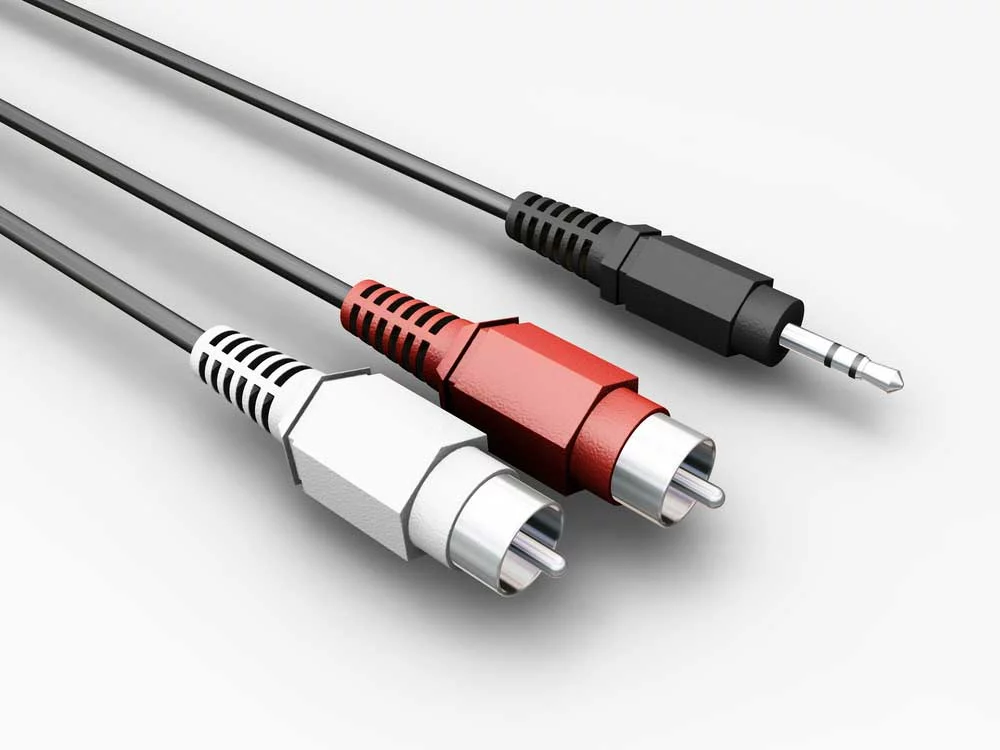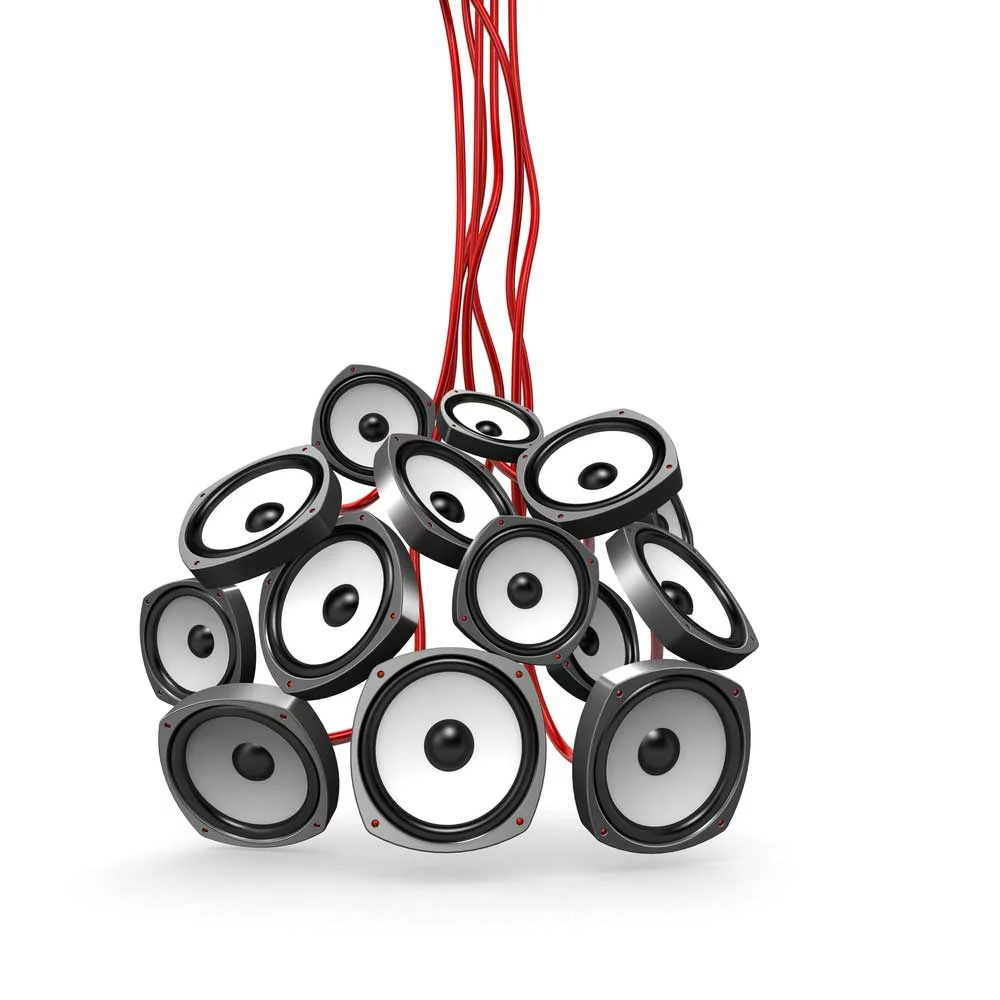Your full audio quality will decrease without a good set of cables to complement a high-end turntable, amplifier, and speaker setup. There are significant differences between RCA, amplifier wires, 3.5 mm, and optical cabling, all of which are used to output sound. Let’s look into the details of the audio cable for speakers.
Table of Contents
- Common types of audio cables for speakers
- Factors influencing the performance of speaker cables
- Audio Cable for Speakers: Connection tips for Audio cable for speakers
- Conclusion
Common types of audio cables for speakers
Some popular types of audio cables are as follows.
Interconnect Cables
Throughout your home listening experience, you will most likely come across interconnect wires. These cables carry the audio signal from your turntable or other music-generating devices to your amplifier (or speakers, if you have powered, active ones). They also carry the audio signal from the amplifier to the passive speakers. Moreover, 3.5mm, XLR, or RCA cables are the most typical connecting wires.
- Connecting your turntable to an amplifier or active speakers typically involves using RCA cables, which are white and red. The maximum recommended length for these wires is four meters; any longer and distortion may occur.
- Balanced XLR cords have 3-pin connectors on either the male or female end. These cables are ideal for connecting audio over greater distances and are often utilized with higher-end audio equipment.
- Auxiliary cables are sometimes known as 3.5-millimeter audio cables. However, many cell phone manufacturers have discontinued support for this connection. Still, the cable helps connect turntables, laptops, CD players, and other audio devices to amplifiers and active speakers.
Speaker Cables
Speaker cables’ only uncomplicated function is to link an amplifier to a speaker. These cables are the lifeblood of passive speakers, as they carry both the electrical current and the audio signal. There is a wide variety of speaker cables available, each with a somewhat different form factor, but they all serve the same purpose.
- Thicker speaker cables are better suited for louder levels and bass-heavy setups, so keep that in mind while shopping for speaker wires. The lifespan and fidelity of your music might benefit from a high-quality cable connection.
- Bi-wires, in which two terminals join through bridging bars, are an additional feature of some speakers. To connect your speakers to the amplifier, you will need two separate speaker wire runs for each speaker. Also, when plugging in the speakers, you should double-check that the Left/Right connectors are identical.
- Banana plugs are another option; they can be bought separately or connected to a speaker cable. These prong-shaped connectors protect your passive speakers’ copper cabling and make it easier to plug them in. Remember that not all loudspeakers will accept banana plugs.
Digital Cables
While digital cables share certain similarities in form with interconnects, their primary purpose is to add a digital connection to an existing system.
- There has been a recent uptick in the availability of USB cables for use with turntables and other types of high-quality vinyl playback equipment. The primary use for these cables is to link a record player or other audio device to a computer. So, if you need to convert your file into digital audio files, this will help.
- While you often use the RCA for analog connections, you can transmit a digital audio stream with just a single RCA cable when combined with the right equipment.
- Super digital cables like optical and coaxial cables are often used to connect items to televisions and soundbars, but this output is also included in many amplifiers and turntables.

Caption: Audio XLR cables with prerecorded
Factors influencing the performance of speaker cables
Many factors influence the speaker cable quality. Let’s see them in detail.
Resistance
The resistance of the wire is proportional to the cable’s size and thickness. Moreover, the resistivity of a long, thin wire will be greater than that of a shorter, thicker wire with the same cross-section. A perfect cable would have zero resistance. Hence, most electricians choose a wider wire, like a 12-gauge wire, over a thinner wire, such as an 18-gauge wire, to achieve the optimum electricity transfer.
Wire material
Copper’s low price and resistance make it the material of choice for most speaker cables. Copper oxidizes, so it needs to be protected and kept warm. Also, exposed pure copper reacts with air to form copper oxide, which coats the exposed surface and serves as a barrier between the wire and the speaker/amplifier, potentially weakening the connection.
Since silver has a somewhat lower resistance than copper, a thinner gauge can still provide a lower resistance, but silver is more expensive than copper.
Gold does not oxidize and is suitable for open terminations; however, its higher resistivity than copper or silver means it is rarely used as a speaker cable.
As with other metals, the price of the wire (per meter) goes up in line with how pure it is. Cables come in a wide variety of purities, and whether or not that makes a noticeable difference in the sound is something only you can judge.
Terminations
At the end of your speaker lines, you can use special terminations to make connecting your audio equipment to your speakers easier.
Even though their names are different, banana and spade plugs are the most common choices. When properly installed, they ensure a stable and reliable electrical connection and reduce the chance of shorting caused by stray filaments of wire hitting adjacent binding posts, and this is their principal advantage.
Furthermore, terminations can be helpful if you often plan to alter your system by adding or removing components. You can get away with regular wire binding if you plan on plugging in your speakers once and listening to them for years.
Audio Cable for Speakers: Bi-wire or single wire
Finally, you can choose to bi-wire your speakers if you want. If your speaker has a single wire input, the answer is clear: go with that. However, you can use Bi-wire Speaker Cable if they have dual speaker terminals. Single wire provides a more consistent sound, while bi-wiring helps generate a more expansive sound stage and boost levels of detail. Again, this is one of the hot debates. However, bi-wiring of the same quality is typically more expensive than single wiring.

Caption: Cables for audio and video streaming
Audio Cable for Speakers: Connection tips for Audio cable for speakers
Here are a few tips to make a safe and strong connection with audio cables.
- Calculate the required length of the speaker wire. Connect each speaker to the transmitter or amplifier through a string. Then, calculate how long the string will be and make it a little longer.
- Select the wire size for the stereo speaker wire. High-power uses, particularly with low-impedance speakers, call for thicker wires (such as 12 or 14-gauge speakers) (4 or 6-ohms).
- Speaker has two kinds of terminals – binding posts and spring clips. Thanks to the spring loading mechanism, the wire is securely placed in spring clips. However, spade connections, banana plugs, and dual-banana plugs are incompatible with spring clip terminals. On the other hand, binding posts make a very robust connection for the headphone wire.
- Know which ends of your speaker wires are positive and negative. Remember to plug them into your amplifier or transmitter and speakers. The music will sound off if you switch any of the wires around.
- Choose the wires according to your target area. For example, use UL-rated wires for ceilings, and for outdoor speakers, you can use direct burial cables. Moreover, focus on the material of the cable insulation as well.
- In some cases, you might want to connect the wires without connectors. Remove the insulation and securely twist each bare wire strand so no stray fibers are hanging out. However, loose stranding might cause short circuits while destroying your components as they come into contact.

Bunch of speakers
Conclusion
You’ll need to upgrade your amplifier, turntables, and speakers to get the most out of it. It doesn’t matter how much money you spend; quality speaker cables are essential for achieving a truly immersive listening experience. Using good material for your audio wire improves the signal’s quality and the cable’s life span. Here at Cloom, we offer wiring harness solutions and custom cable assemblies at affordable prices, so you don’t have to worry about perfection.
